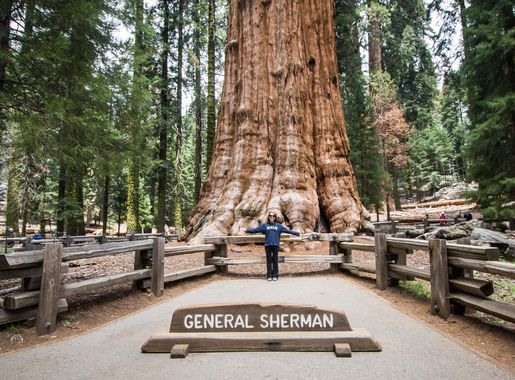
Majesty Among Giants: Sequoia National Park
Discover Sequoia National Park: Home to the world's largest trees, diverse wildlife, and stunning natural vistas in California's Sierra Nevada mountains.
Nestled in the heart of California's Sierra Nevada mountains, Sequoia National Park is a breathtaking destination where nature enthusiasts can immerse themselves in the grandeur of ancient giants. Home to the world's largest trees, this park offers a unique blend of awe-inspiring landscapes, diverse wildlife, and rich history. As you wander through the forest, the towering sequoias, some over 3,000 years old, will leave you speechless with their sheer size and beauty. The park's most famous resident, General Sherman, is the largest tree on Earth by volume, a testament to the resilience and majesty of nature. Sequoia National Park isn't just about its trees; it also boasts a variety of natural wonders. The park's numerous hiking trails cater to all levels, from easy strolls to challenging treks. Wander through the lush meadows, crystal-clear rivers, and rugged mountains that define this pristine wilderness. Don't miss the stunning vistas from Moro Rock, a granite dome offering panoramic views of the Great Western Divide. For those interested in spelunking, the Crystal Cave, an ornate marble cavern, provides an underground adventure unlike any other. Visitors to Sequoia National Park can also delve into the cultural history of the area. The park's visitor centers offer exhibits and educational programs about the Native American tribes who once called this land home, as well as the early explorers and conservationists who fought to preserve its natural beauty. Whether you're camping under the stars, exploring the park's diverse ecosystems, or simply soaking in the serenity of this majestic environment, Sequoia National Park promises an unforgettable experience that connects you with the timeless wonders of nature.
Local tips in Sequoia National Park
- Visit during the spring or fall to avoid the summer crowds and experience milder weather.
- Bring layers; temperatures can vary greatly between day and night.
- Purchase tickets for the Crystal Cave tour in advance, as they often sell out.
- Carry plenty of water and snacks, especially if hiking; facilities can be sparse.
- Check for road closures and weather conditions before heading to higher elevations.
- Use bear-proof food storage containers when camping to avoid attracting wildlife.
- Download maps and guides beforehand as mobile reception can be unreliable.
Majesty Among Giants: Sequoia National Park
Nestled in the heart of California's Sierra Nevada mountains, Sequoia National Park is a breathtaking destination where nature enthusiasts can immerse themselves in the grandeur of ancient giants. Home to the world's largest trees, this park offers a unique blend of awe-inspiring landscapes, diverse wildlife, and rich history. As you wander through the forest, the towering sequoias, some over 3,000 years old, will leave you speechless with their sheer size and beauty. The park's most famous resident, General Sherman, is the largest tree on Earth by volume, a testament to the resilience and majesty of nature. Sequoia National Park isn't just about its trees; it also boasts a variety of natural wonders. The park's numerous hiking trails cater to all levels, from easy strolls to challenging treks. Wander through the lush meadows, crystal-clear rivers, and rugged mountains that define this pristine wilderness. Don't miss the stunning vistas from Moro Rock, a granite dome offering panoramic views of the Great Western Divide. For those interested in spelunking, the Crystal Cave, an ornate marble cavern, provides an underground adventure unlike any other. Visitors to Sequoia National Park can also delve into the cultural history of the area. The park's visitor centers offer exhibits and educational programs about the Native American tribes who once called this land home, as well as the early explorers and conservationists who fought to preserve its natural beauty. Whether you're camping under the stars, exploring the park's diverse ecosystems, or simply soaking in the serenity of this majestic environment, Sequoia National Park promises an unforgettable experience that connects you with the timeless wonders of nature.
When is the best time to go to Sequoia National Park?
Iconic landmarks you can’t miss
General Sherman Tree
Explore the General Sherman Tree, a towering giant in Sequoia National Park, showcasing nature's grandeur and the rich biodiversity of California's forests.
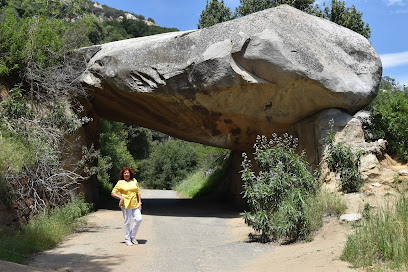
General Grant Tree
Discover the grandeur of the General Grant Tree in Kings Canyon National Park, a breathtaking natural wonder and symbol of resilience.
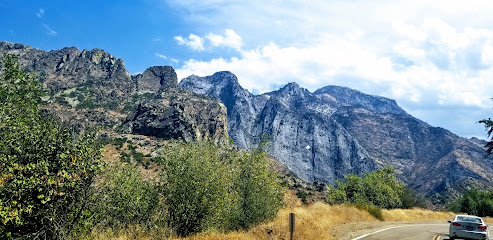
Moro Rock Trail
Experience stunning views and natural beauty on the Moro Rock Trail, a must-visit hiking destination in Sequoia National Park.
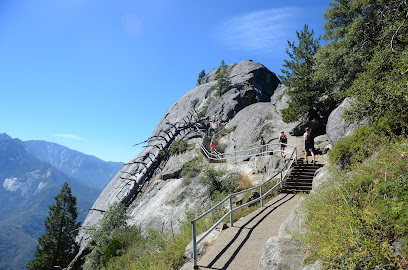
Kings Canyon Visitor Center
Discover the breathtaking beauty of Kings Canyon National Park at the Kings Canyon Visitor Center, your gateway to adventure and exploration.

Sequoia & Kings Canyon National Parks
Explore the breathtaking Sequoia & Kings Canyon National Parks, home to towering sequoias, stunning landscapes, and endless outdoor adventures.
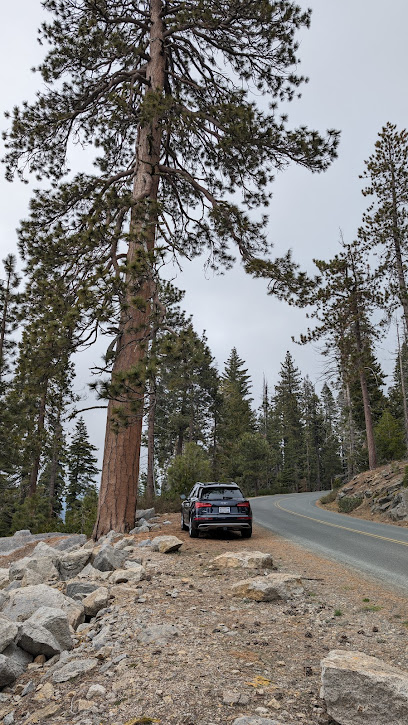
Giant Forest Museum
Discover the ecological and cultural significance of the majestic Sequoia trees at the Giant Forest Museum, an essential stop in Sequoia National Park.
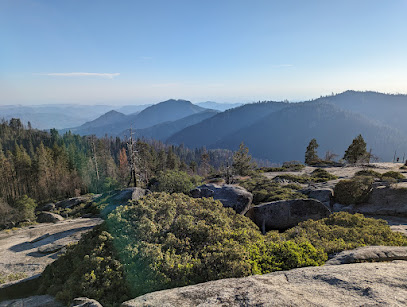
Foothills Visitor Center
Explore the wonders of Sequoia and Kings Canyon National Parks at the Foothills Visitor Center, your essential resource for adventure and discovery.
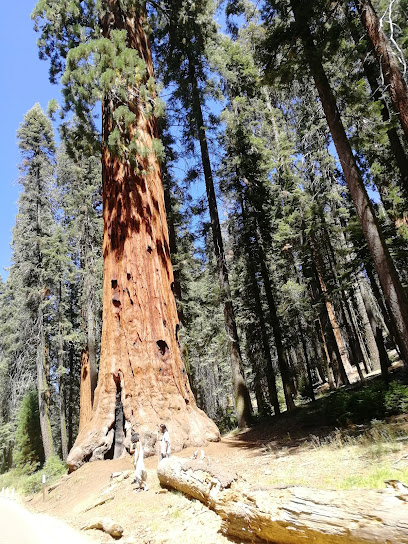
Wuksachi Lodge
Experience the natural beauty of Sequoia National Park while enjoying cozy accommodations at Wuksachi Lodge, the perfect retreat for outdoor enthusiasts.
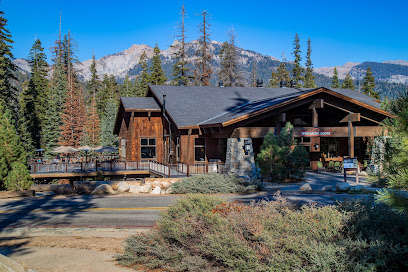
Slick Rock Recreation Area
Explore the serene beauty and thrilling adventures of Slick Rock Recreation Area in Three Rivers, California, perfect for outdoor enthusiasts and families.
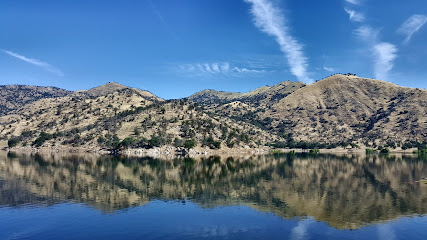
Sequoia National Park's Tunnel Log
Discover the stunning Tunnel Log in Sequoia National Park, where nature's resilience meets breathtaking beauty in a colossal sequoia.
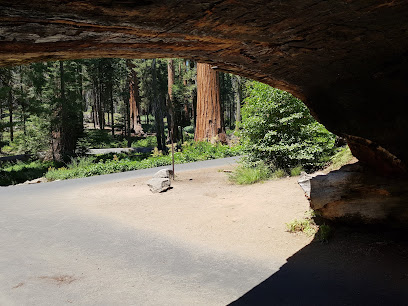
Tunnel Rock
Discover Tunnel Rock in Sequoia National Park - a stunning granite tunnel that welcomes you to majestic landscapes and towering sequoias.
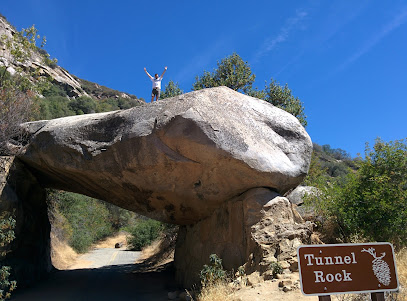
Grizzly Falls Picnic Area
Experience the serene beauty of Grizzly Falls Picnic Area in California—an idyllic spot for picnics, hiking, and enjoying nature's wonders.

Panoramic Point Overlook
Explore the stunning vistas of Panoramic Point Overlook, a scenic gem in California's Sierra Nevada Mountains perfect for nature lovers and photographers.
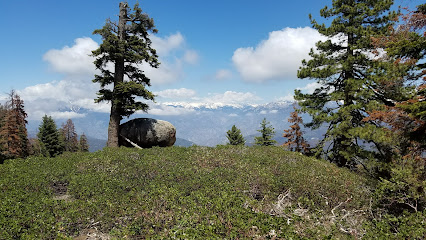
Sherman Tree Trail
Explore the Sherman Tree Trail in Sequoia National Park, where ancient giant sequoias tower above and nature's beauty captivates every visitor.
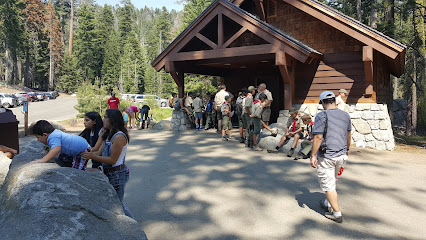
Moro Rock
Discover Moro Rock, a breathtaking granite dome in Sequoia National Park, offering stunning views and unforgettable hiking adventures in California's wilderness.
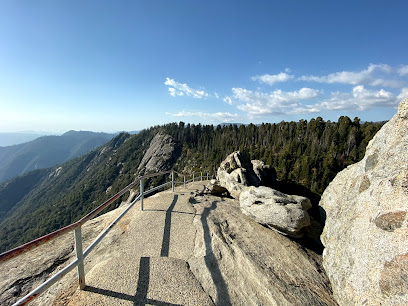
Unmissable attractions to see
General Sherman Tree
Explore the awe-inspiring General Sherman Tree, the largest tree on earth, nestled in Sequoia National Park's breathtaking landscapes.
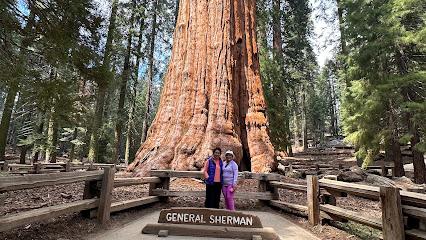
General Sherman Tree
Discover the awe-inspiring General Sherman Tree in Sequoia National Park, a natural wonder that showcases the beauty and majesty of the world's largest tree.
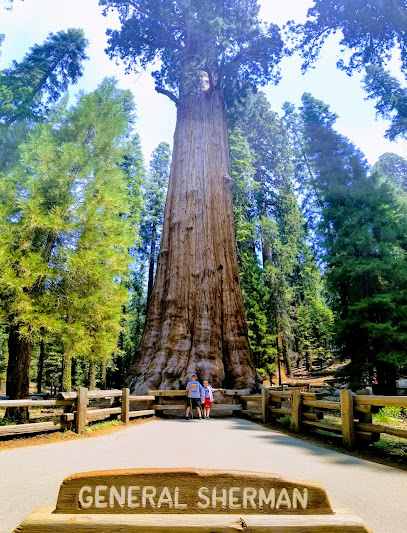
General Grant Tree
Experience the awe of the General Grant Tree, a natural wonder nestled in Kings Canyon National Park, California, embodying the beauty of ancient sequoias.
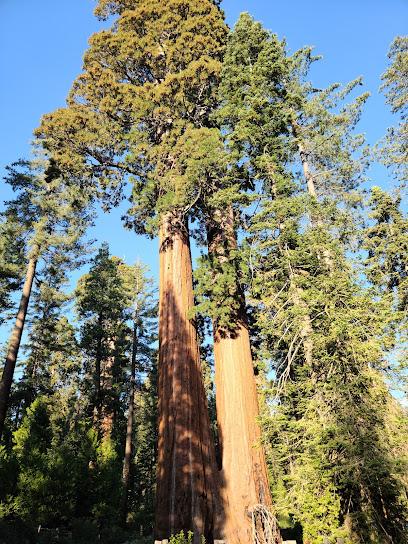
General Grant Tree
Explore the General Grant Tree in Kings Canyon National Park, a towering giant sequoia and a symbol of nature's grandeur.
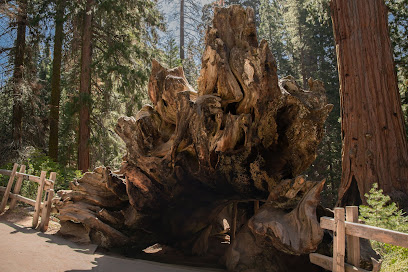
Moro Rock Trail
Explore the breathtaking Moro Rock Trail in Sequoia National Park, where stunning views and nature await every adventurer.
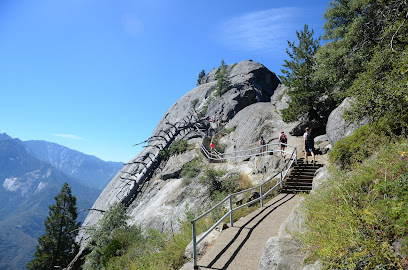
Kings Canyon Visitor Center
Explore the Kings Canyon Visitor Center, your gateway to California's stunning natural beauty and outdoor adventures in Kings Canyon National Park.
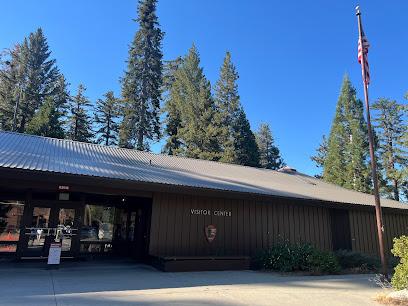
Sequoia & Kings Canyon National Parks
Explore Sequoia & Kings Canyon National Parks: Home to towering trees, stunning landscapes, and rich wildlife in California's natural paradise.
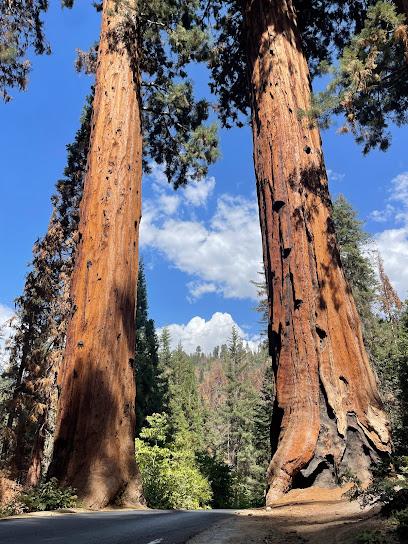
Giant Forest Museum
Explore the Giant Forest Museum, a gateway to the majestic sequoias of Sequoia National Park, blending education with breathtaking natural beauty.
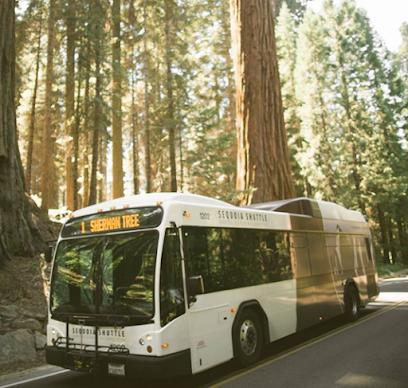
Sequoia & Kings Canyon National Parks
Explore the majestic Sequoia & Kings Canyon National Parks, a breathtaking haven of towering trees, stunning landscapes, and endless outdoor adventures.
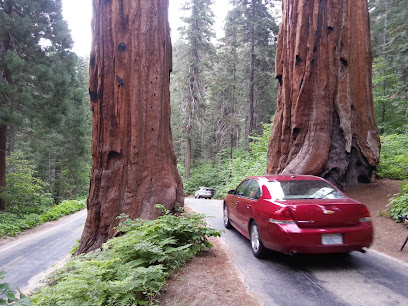
Giant Forest Museum
Explore the Giant Forest Museum: A Gateway to the Majestic World of Sequoias and Nature's Wonders in Sequoia National Park.
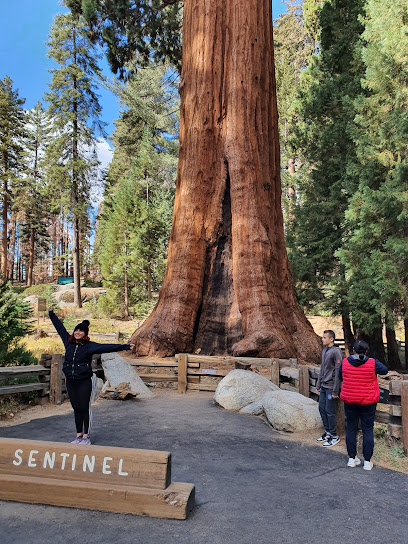
Foothills Visitor Center
Explore the wonders of Sequoia National Park at the Foothills Visitor Center, your gateway to majestic giant sequoias and breathtaking trails.
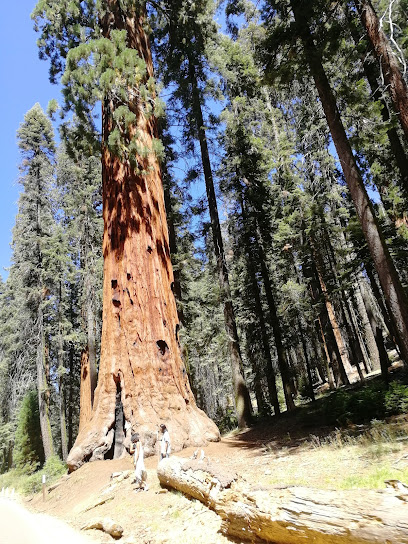
Trail of 100 Giants Trailhead
Discover the breathtaking beauty of the Trail of 100 Giants, a stunning hiking area featuring majestic giant sequoias in California's picturesque landscape.
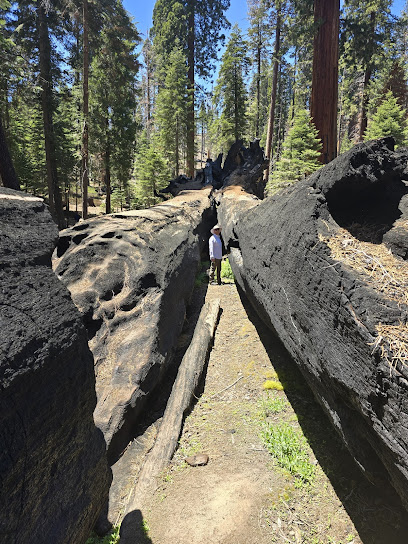
Slick Rock Recreation Area
Experience the breathtaking beauty and diverse recreational activities at Slick Rock Recreation Area in California's Sierra Nevada foothills.
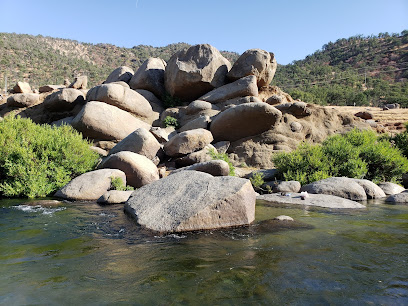
Sequoia National Park's Tunnel Log
Explore the iconic Tunnel Log at Sequoia National Park, a breathtaking natural wonder that showcases the grandeur of ancient sequoias in California.
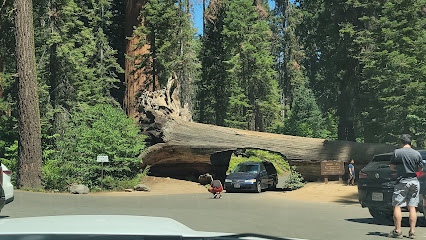
Tunnel Rock
Discover Tunnel Rock in Sequoia National Park: a stunning natural landmark, historic site, and gateway to breathtaking landscapes and outdoor adventure.
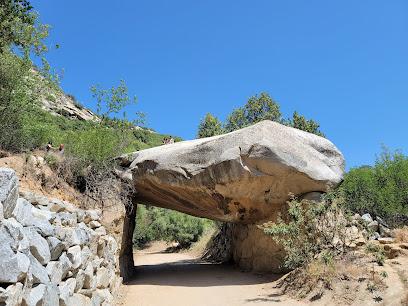
Essential places to dine
The Big Red Barn, Murray Family Farms
Experience farm-fresh delights at The Big Red Barn – where culinary excellence meets family fun in Bakersfield's beautiful countryside.
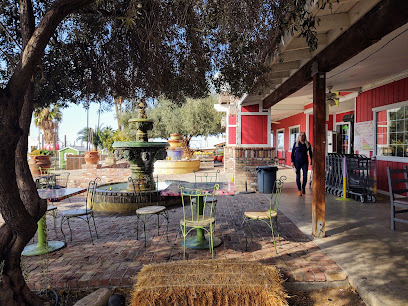
General Grant Tree
Explore California's Kings Canyon National Park and stand in awe before the magnificent General Grant Tree – nature's ancient giant.

Moro Rock Trail
Explore Moro Rock Trail: A breathtaking hiking experience in Sequoia National Park offering stunning views of California's Sierra Nevada mountains.
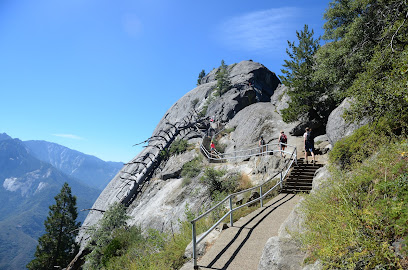
Giant Forest Museum
Explore nature's giants at Giant Forest Museum in Sequoia National Park - a captivating blend of education and breathtaking scenery.
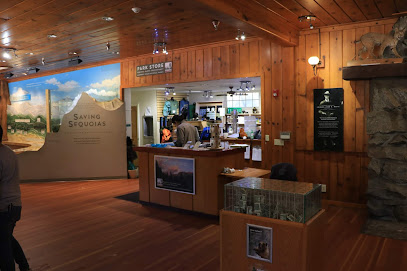
The Gateway Restaurant & Lodge
Discover the perfect blend of fine dining and cozy lodging at The Gateway Restaurant & Lodge near Sequoia National Park.
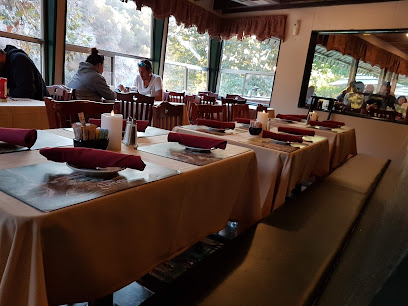
River View Grill & Bar
Discover River View Grill & Bar in Three Rivers: A perfect blend of scenic views and delectable American cuisine awaits you!
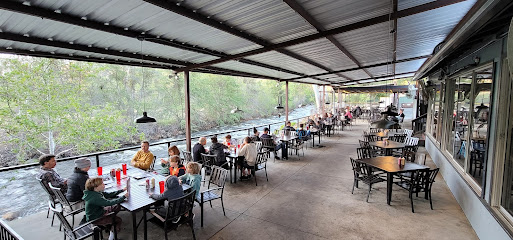
Black Bear Diner Porterville
Experience hearty American cuisine at Black Bear Diner Porterville - where family-friendly dining meets delicious comfort food.
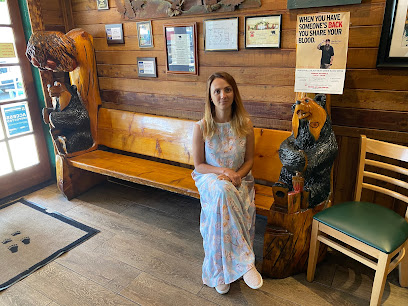
Pizza Factory
Experience family-friendly dining at Pizza Factory in Three Rivers – savor delicious pizzas and authentic Italian cuisine near Sequoia National Park.
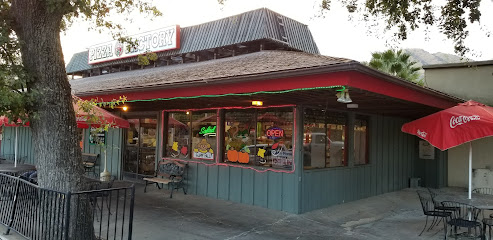
Wuksachi Lodge
Experience the natural beauty of Sequoia National Park at Wuksachi Lodge—your perfect mountain retreat with modern comforts.
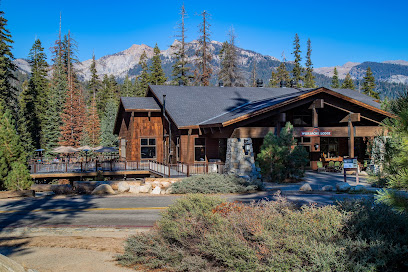
Sequoia Brewing
Discover Sequoia Brewing in Visalia – where craft beer meets culinary delight in a welcoming brewpub atmosphere.
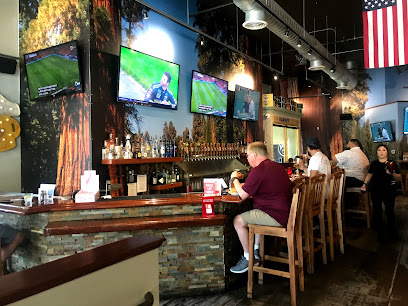
Bear Mountain Pizza
Experience the best pizza in Yokuts Valley at Bear Mountain Pizza - where delicious flavors meet breathtaking views.
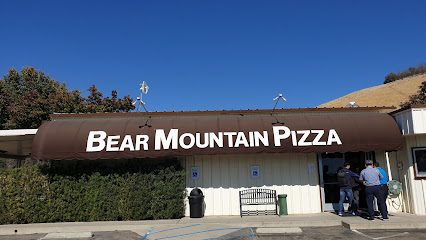
Ewings on the Kern
Experience mouthwatering steaks and local American cuisine at Ewings on the Kern, where culinary excellence meets riverside charm in beautiful Kernville.
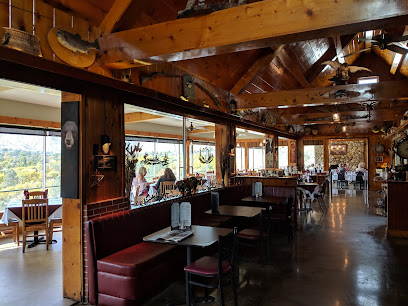
Casa Mendoza Mexican Restaurant
Discover authentic Mexican cuisine at Casa Mendoza in Three Rivers—where vibrant flavors meet stunning scenery.
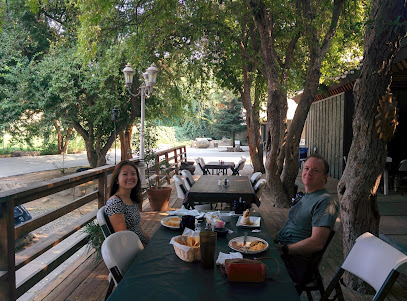
The Vintage Press Restaurante
Experience exquisite fine dining at The Vintage Press in Visalia, where culinary artistry meets elegance for an unforgettable meal.

Lodgepole Campground
Experience the tranquility of Lodgepole Campground in Sequoia National Park – where nature meets adventure in California's Sierra Nevada.
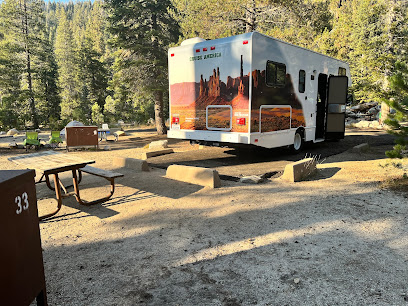
Markets, malls and hidden boutiques
Tulare Outlets
Discover unbeatable deals at Tulare Outlets, a premier shopping destination featuring over 60 brand-name stores in California.
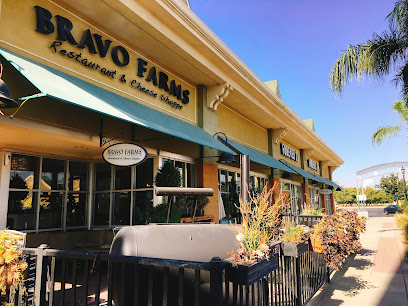
General Grant Tree
Experience the grandeur of the General Grant Tree, a magnificent giant sequoia in Kings Canyon National Park, showcasing nature's beauty and history.
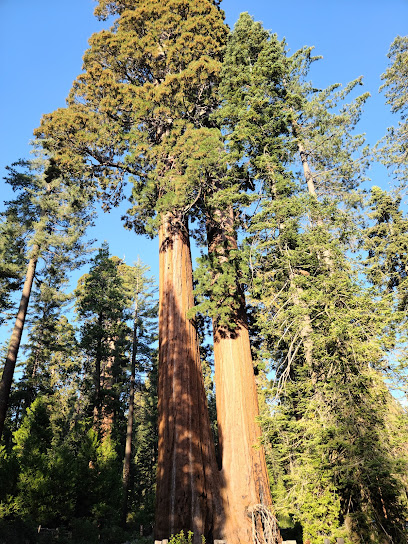
Sequoia Station
Explore the vibrant Sequoia Station in Redwood City, California, a premier shopping mall with delightful dining options and local experiences.
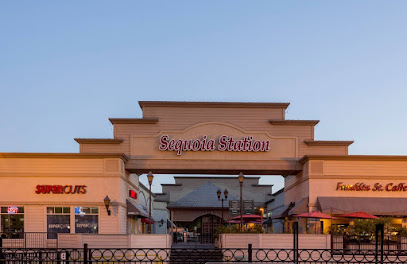
Giant Forest Museum
Delve into the ancient wonders of sequoias at the Giant Forest Museum, your gateway to Sequoia National Park's majestic beauty.
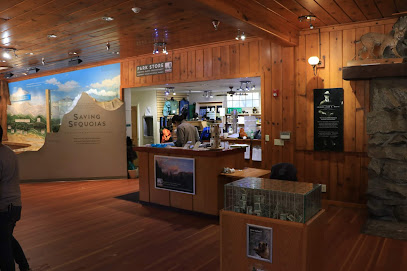
Foothills Visitor Center
Explore the Foothills Visitor Center, your essential starting point for adventures in Sequoia National Park's stunning landscapes and rich wildlife.
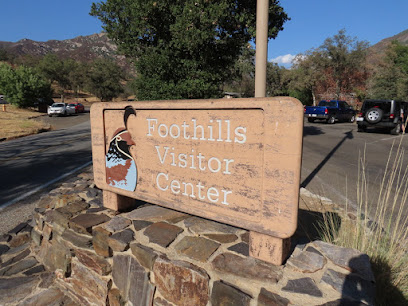
Reimers Candies & Gifts
Discover the sweet side of Three Rivers at Reimers Candies & Gifts, where artisanal treats and delightful gifts await every visitor.
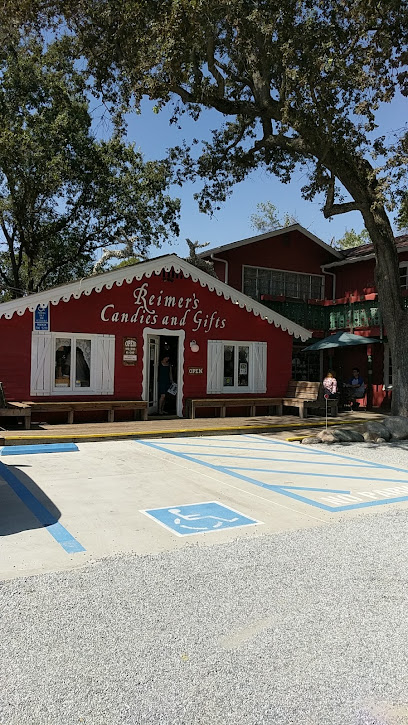
Sierra Subs & Salad
Discover fresh, delicious sandwiches and salads at Sierra Subs & Salad, the perfect stop before your Sequoia National Park adventure.
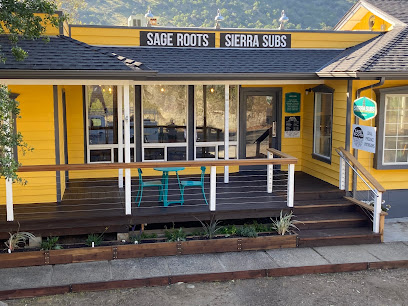
Totem Market & Gifts
Explore Totem Market & Gifts for unique souvenirs, gourmet snacks, and local brews in the heart of California's Sequoia region.
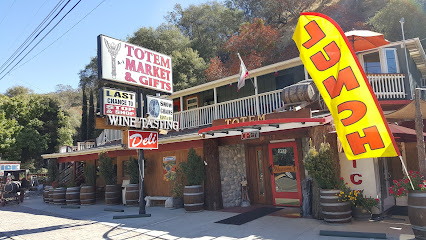
Sequoia Coffee Co.
Enjoy exceptional coffee and a cozy atmosphere at Sequoia Coffee Co., the perfect stop for nature lovers near Sequoia National Park.
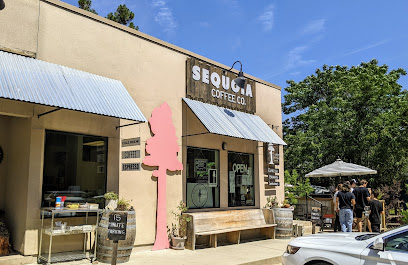
Village Market
Discover the Village Market in Three Rivers, CA – your go-to grocery store near Sequoia National Park, offering fresh produce, snacks, and local essentials.
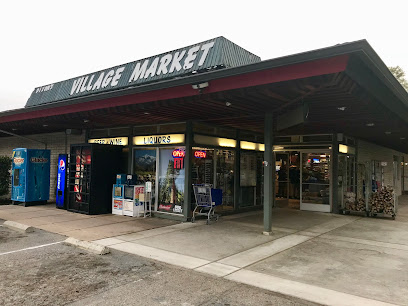
Clingan's Junction Cabins & Coffee
Experience the perfect blend of rustic charm and exceptional coffee at Clingan's Junction Cabins & Coffee in Yokuts Valley, a must-visit for nature lovers.
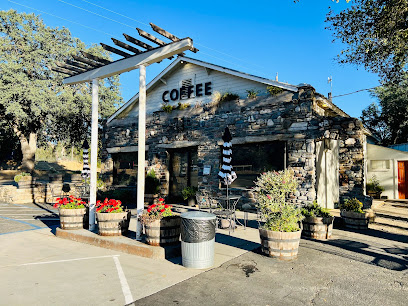
Boyden Cavern Adventures & Tours LLC.
Discover the magical depths of Boyden Cavern in Kings Canyon National Park, a breathtaking adventure for all nature lovers and explorers.
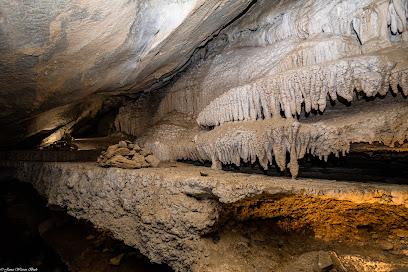
The Giant Forest
Discover the awe-inspiring Giant Forest, home to the world's largest trees and a natural wonder within Sequoia National Park.

Lodgepole Market & Grill
Discover Lodgepole Market & Grill in Sequoia National Park for local snacks, delicious meals, and unique souvenirs amidst stunning natural beauty.
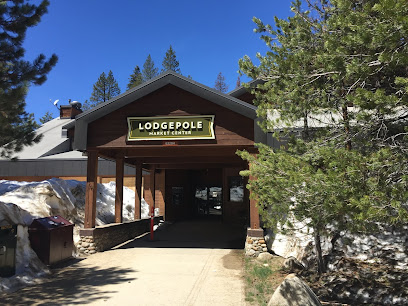
Eagle Feather Trading Post
Explore Eagle Feather Trading Post in Porterville for authentic Native American crafts, unique gifts, and a connection to local culture.
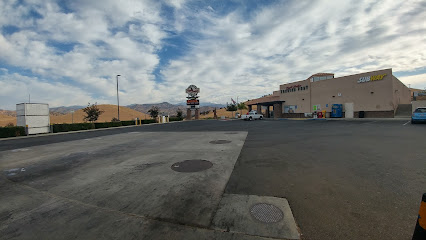
Essential bars & hidden hideouts
The Gateway Restaurant & Lodge
Discover the perfect blend of fine dining and cozy lodging at The Gateway Restaurant & Lodge, your gateway to Sequoia National Park.

River View Grill & Bar
Experience delightful American cuisine at River View Grill & Bar, where breathtaking river views enhance your dining adventure.
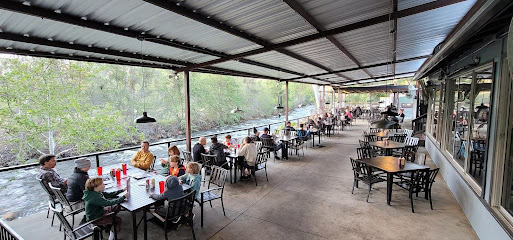
Wuksachi Lodge
Experience the serenity of nature at Wuksachi Lodge, your perfect retreat in Sequoia National Park with stunning views and cozy accommodations.
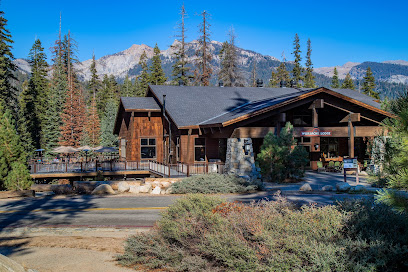
Sequoia Brewing
Discover the craft of brewing at Sequoia Brewing in Visalia, California, where local flavors meet a warm, inviting atmosphere.
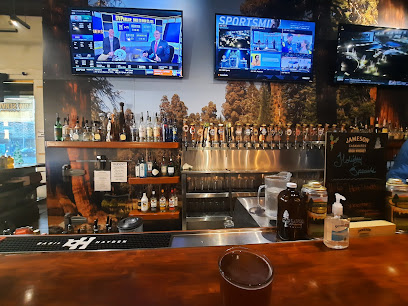
Casa Mendoza Mexican Restaurant
Experience authentic Mexican cuisine in Three Rivers at Casa Mendoza, where flavor meets hospitality in a vibrant setting.
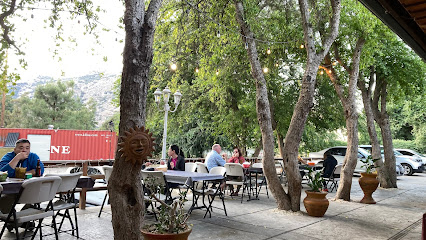
Ol Buckaroo
Discover the flavors of New American cuisine at Ol Buckaroo in Three Rivers, California, where fresh ingredients meet stunning natural beauty.
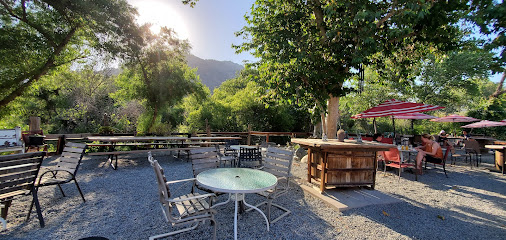
Sierra Subs & Salad
Discover fresh and delicious sandwiches and salads at Sierra Subs & Salad, a delightful deli in the heart of Three Rivers, California.
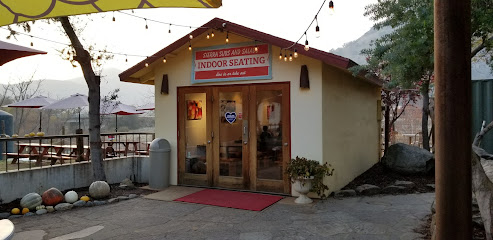
Sequoia Cider Mill Restaurant
Experience family-friendly American dining at the Sequoia Cider Mill, where local flavors meet stunning natural beauty.
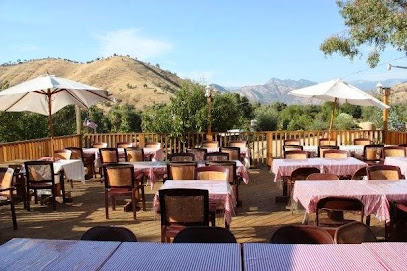
Totem Market & Gifts
Discover unique souvenirs, local wines, and gourmet treats at Totem Market & Gifts in Three Rivers, California.
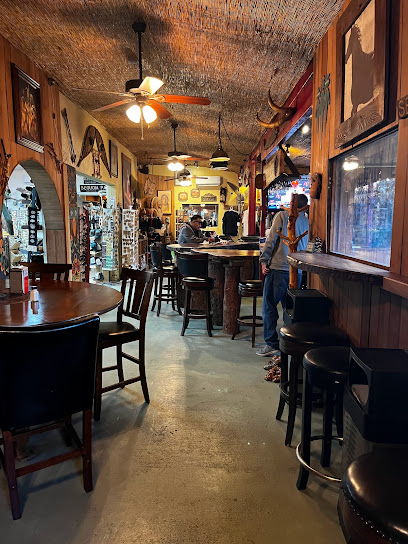
Sequoia Coffee Co.
Discover the charm of Sequoia Coffee Co. in Three Rivers, where delicious food and coffee meet stunning natural beauty.
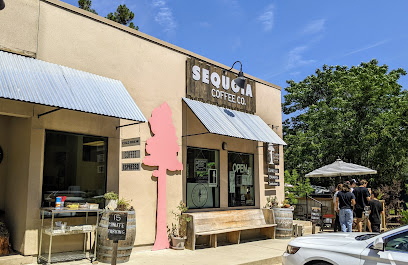
Gena's Sierra Inn and Restaurant LLC
Discover the rustic charm of Gena's Sierra Inn and Restaurant, where comfort meets culinary delight amidst the majestic Sierra Nevada.
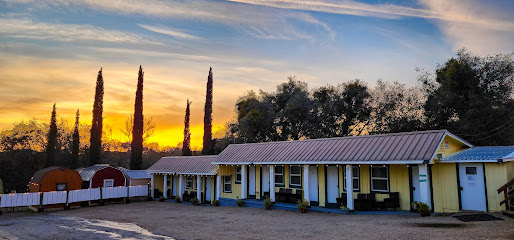
Baker Mountain House
Experience the warmth and flavor of Baker Mountain House, a culinary gem nestled in the stunning landscapes of Badger, California, perfect for travelers seeking local cuisine.
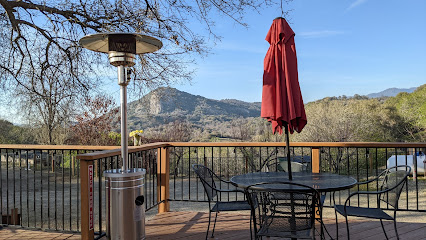
Grant Grove Restaurant
Experience the flavors of America amidst the breathtaking beauty of Sequoia National Park at Grant Grove Restaurant.
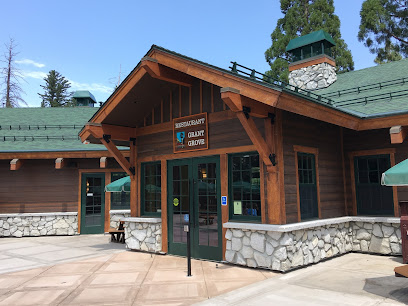
The Peaks Restaurant
Experience the best of American cuisine surrounded by the breathtaking beauty of Sequoia National Park at The Peaks Restaurant.
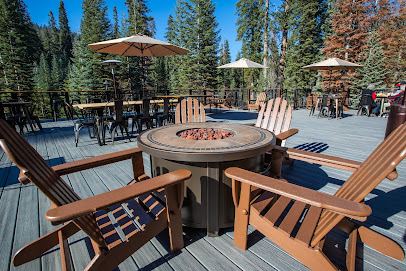
Pierpoint Bar & Grill
Discover the flavors of Springville at Pierpoint Bar & Grill, where rustic charm meets a vibrant bar atmosphere, perfect for food and drink enthusiasts.
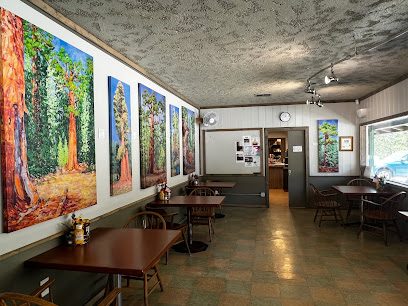
Local Phrases
-
- HelloHowdy
[hah-DEE] - GoodbyeSee ya
[see yah] - YesYep
[yep] - NoNah
[nah] - Please/You're welcomeSure thing
[shuhr thang] - Thank youThanks a bunch
[thanks uh bunch] - Excuse me/SorryPardon me
[par-dn me] - How are you?Howdy
[hah-DEE] - Fine. And you?Doin' good. You?
[doin' good. yoo?] - Do you speak English?Y'all speak English?
[yawl speak ing-glish?] - I don't understandI'm lost
[ahm lost]
- HelloHowdy
-
- I'd like to see the menu, pleaseCan I see the grub list, please
[kan eye see thee gruhb list, please] - I don't eat meatI don't fancy meat
[ahm lost] - Cheers!Cheers!
[cheers] - I would like to pay, pleaseI reckon it's time to settle up
[ah reck-un its time to set-tul up]
- I'd like to see the menu, pleaseCan I see the grub list, please
-
- Help!S.O.S!
[ess-oh-ess] - Go away!Scram!
[skram] - Call the Police!Ring up the Sheriff!
[ring up thee shur-iff] - Call a doctor!Get a doc on the line!
[get uh dok on thee line] - I'm lostI'm disoriented
[ahm dis-or-ee-en-ted] - I'm illI'm feelin' poorly
[ahm feel-in' poor-lee]
- Help!S.O.S!
-
- I'd like to buy...I'm fixin' to purchase...
[ahm fix-in' too pur-chase] - I'm just lookingI'm just browsin'
[ahm just brow-sin'] - How much is it?What's the damage?
[wuts thee dam-ij?] - That's too expensiveThat's mighty steep
[thats my-tee steep] - Can you lower the price?Can you do me a solid on the cost?
[kan yoo do mee uh sah-lid on thee cost?]
- I'd like to buy...I'm fixin' to purchase...
-
- What time is it?What's the time on the sun dial?
[wuts thee time on thee sun dye-ul] - It's one o'clockIt's high noon
[its hi noon] - Half past (10)Halfway to (10)
[half-way too ten] - MorningSun-up
[sun-up] - AfternoonMidday
[mid-day] - EveningSun-down
[sun-down] - YesterdayYesteryear
[yes-ter-year] - TodayPresent day
[pre-zint day] - TomorrowMorrow
[morrow] - 1One
[wun] - 2Two
[too] - 3Three
[three] - 4Four
[four] - 5Five
[five] - 6Six
[six] - 7Seven
[sev-en] - 8Eight
[ate] - 9Nine
[nine] - 10Ten
[ten]
- What time is it?What's the time on the sun dial?
-
- Where's a/the...?Where kin I find a/the...?
[whur kin eye find uh/thee] - What's the address?Whur's the location?
[whurs thee loh-kay-shun] - Can you show me (on the map)?Could you point me in the right direction?
[kood yoo point mee in thee rite di-rek-shun] - When's the next (bus)?When's the next stagecoach?
[whens thee next stayj-coach] - A ticket (to ....)A pass (to ....)
[uh pass too]
- Where's a/the...?Where kin I find a/the...?
History of Sequoia National Park
-
Long before European settlers arrived, the land that is now Sequoia National Park was home to Native American tribes such as the Mono (Monache) and Yokuts. These indigenous peoples lived in harmony with the environment, utilizing the abundant natural resources for food, shelter, and medicine. Rock carvings and artifacts found in the park provide a glimpse into their rich cultural heritage.
-
In the mid-19th century, European-American settlers and explorers ventured into the Sierra Nevada range and encountered the awe-inspiring giant sequoia trees. The discovery of these colossal trees, some of which were named after famous American figures such as General Sherman and General Grant, ignited public interest and scientific curiosity. In 1853, Hale Tharp, a pioneer and cattleman, became one of the first non-Indigenous people to explore the Giant Forest.
-
Sequoia National Park was established on September 25, 1890, making it the second national park in the United States, after Yellowstone. The park was created to protect the giant sequoia trees from logging and other forms of exploitation. The establishment of the park was a significant milestone in the conservation movement, highlighting the importance of preserving natural wonders for future generations.
-
In the early 20th century, efforts to expand and develop the park continued. In 1926, the adjacent General Grant National Park, established in 1890 to protect the General Grant Tree, was incorporated into Kings Canyon National Park, which shares a border with Sequoia National Park. Infrastructure improvements, including the construction of roads, trails, and visitor facilities, made the park more accessible to the public.
-
During World War II, Sequoia National Park played a unique role in the war effort. The park served as a training ground for the U.S. Army's 10th Mountain Division, which was trained in mountain warfare and winter survival techniques. The rugged terrain of the Sierra Nevada provided an ideal setting for preparing soldiers for combat in similar environments overseas.
-
Sequoia National Park has faced numerous natural challenges, including wildfires, droughts, and pest infestations. The park's management has implemented various conservation efforts to mitigate these threats and preserve the ecosystem. Controlled burns, forest thinning, and pest management programs are among the strategies used to protect the park's natural resources.
-
Today, Sequoia National Park is a popular destination for nature enthusiasts, hikers, and tourists from around the world. The park continues to be a symbol of natural beauty and conservation, offering visitors the opportunity to experience the majestic giant sequoias, diverse wildlife, and stunning landscapes. The park's rich history and ongoing preservation efforts ensure that it remains a cherished national treasure.
Sequoia National Park Essentials
-
Sequoia National Park is located in the southern Sierra Nevada mountains of California. The nearest major airports are Fresno Yosemite International Airport (FAT), which is about 1.5 hours drive, and Los Angeles International Airport (LAX), approximately 4.5 hours drive away. From the airports, you can rent a car to drive to the park, as public transportation options are limited. Driving directions from major cities like Los Angeles, San Francisco, and Las Vegas are well-marked and available on the park's official website.
-
Inside Sequoia National Park, personal vehicles are the most convenient way to get around. The park also operates a free shuttle service during the summer months, which connects major attractions like the Giant Forest, Lodgepole Visitor Center, and the General Sherman Tree. Bicycles are allowed on paved roads but not on trails or off-road areas. For those who prefer not to drive, guided tours are available from various tour operators.
-
The official currency is the US Dollar (USD). Most services within the park, such as entrance fees, lodging, and dining, accept major credit and debit cards. However, it is advisable to carry some cash for smaller purchases and in case of connectivity issues. ATMs are available at some of the larger visitor centers, but options are limited, so plan accordingly.
-
Sequoia National Park is generally safe for tourists, but standard precautions should be taken. Always lock your vehicle and keep valuables out of sight. Some areas of the park can be remote, so ensure you have enough fuel and supplies. The park does not have high-crime areas targeting tourists, but it's always best to be aware of your surroundings. Wildlife encounters are common; keep a safe distance and do not feed the animals.
-
In case of an emergency, dial 911 for immediate assistance. The park has its own emergency services, including rangers trained in first aid and search and rescue operations. Medical facilities are available at nearby towns like Three Rivers. It is highly recommended to carry a first aid kit and know basic first aid. For minor health issues, visitor centers often have basic medical supplies.
-
Fashion: Do wear comfortable, weather-appropriate clothing and sturdy shoes for hiking. Avoid wearing open-toed shoes on trails. Religion: Respectful behavior is expected at all times, although there are no specific religious customs to follow. Public Transport: Do use the park’s shuttle service during peak seasons to reduce traffic and parking issues. Greetings: Friendly greetings like a smile or a 'hello' are common. Eating & Drinking: Do carry out all trash and use designated picnic areas. Don't feed the wildlife, as it is harmful to them.
-
To experience Sequoia National Park like a local, visit lesser-known spots such as Mineral King Valley and the High Sierra Trail. Engage with park rangers during scheduled talks and tours to gain deeper insights into the park's history and ecology. Try to visit during the shoulder seasons (spring and fall) to avoid crowds and enjoy more serene experiences. Remember to check the park's official website or visitor centers for updates on road conditions and trail closures.
Trending Landmark in Sequoia National Park
-
General Sherman Tree
-
General Grant Tree
-
Moro Rock Trail
-
Kings Canyon Visitor Center
-
Sequoia & Kings Canyon National Parks
-
Giant Forest Museum
-
Foothills Visitor Center
-
Wuksachi Lodge
-
Slick Rock Recreation Area
-
Sequoia National Park's Tunnel Log
-
Tunnel Rock
-
Grizzly Falls Picnic Area
-
Panoramic Point Overlook
-
Sherman Tree Trail
-
Moro Rock
Nearby Cities to Sequoia National Park
-
Things To Do in Fresno
-
Things To Do in Bakersfield
-
Things To Do in Yosemite Village
-
Things To Do in Turlock
-
Things To Do in Santa Clarita
-
Things To Do in Pismo Beach
-
Things To Do in Modesto
-
Things To Do in Santa Barbara
-
Things To Do in Burbank
-
Things To Do in Oxnard
-
Things To Do in Glendale
-
Things To Do in Pasadena
-
Things To Do in Hollywood
-
Things To Do in Los Angeles
-
Things To Do in Malibu

